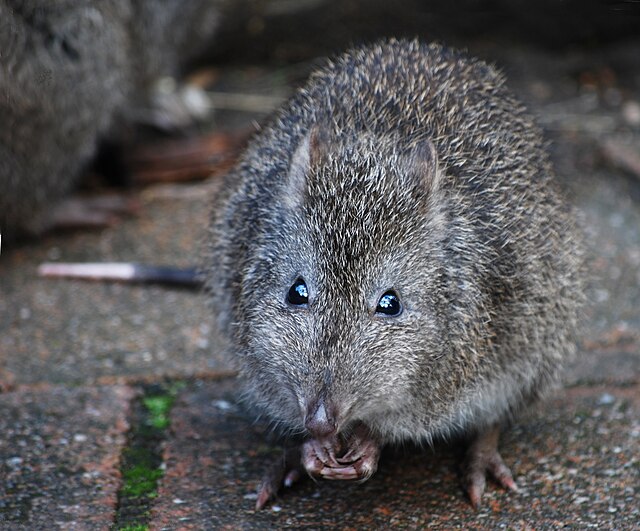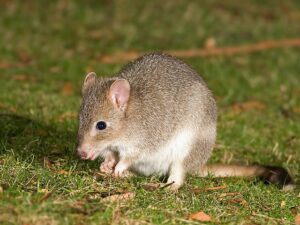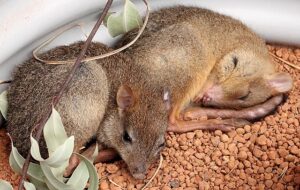
From sifting through topsoil for native truffles to cracking open hard shells of seeds and nuts to munch on the tasty kernels, Australia bettongs and potoroos are described as 'ecosystem engineers' in a two-way relationship between their rich diet and environmental health.
However, with native ecosystems and potoroid marsupial numbers in decline, ecology and evolution experts led by Flinders University are working to understand how difficult it is to bite into the foods these leading foragers seek out.

This information can be used to assess their ability to survive in conservation or new reserves, or in the formulation of captive diets, explains Dr Rex Mitchell, research associate at the College of Science and Engineering at Flinders University.
"Revitalising the populations and distributions of bettongs and potoroos isreally important for maintaining biodiversity and healthy ecosystems in Australia," says Dr Rex Mitchell, about a new article in Australian Mammology.
"Important to these conservation efforts is a clearer understanding of the hardness and toughness of potoroid diets from various habitats, and comparing these with farmed foods or dietary supplements commonly used in captivity."
Australia's potoroid marsupials have built a rich gastronomic preference, living on a diverse menu of nutritious and easily digested wild foods including roots and tubers, fruit, fungi, seeds, leaves and even small animals and insects. Digging up these delicacies leads to vegetation and nutrient mixing in soils, seed and fungi dispersal across the landscape, and plant regeneration.
All this makes them invaluable contributors to ecosystem function.
Field work was undertaken in the New England region of NSW and the Simpson Desert in South Australia was undertaken to measure the food mechanical properties of potoroo and bettong diets, to compare their diets in the to commercially available alternatives as possible substitutes or additional food sources.

"An intriguing behaviour of potoroids such as the woylie (Bettongia penicillata) and burrowing bettong (B. lesueur) was their ability to crack open the extremely resistant shells of sandalwood and quandong seeds to access the kernels inside," says Dr Mitchell, who tested the power needed to crack open the shells.
Some of these required upwards of 1000 Newtons (or about 100kg) of direct force to crack with testing machinery in the lab.
"But the jaws of bettongs are much smaller, which makes the feat even more remarkable," says Dr Mitchell.
"It turns out the shells of dried seeds are less tough but more stiff than fresh shells, which might make them easier to crack open. This would explain why bettongs often cache or hoard the seeds to crack open later."

New knowledge of native animals' food mechanical properties and the comparable farmed foods will continue to inform development of better captive breed regimes and feed formulations," researchers says.
Farmed foods such as commercial nuts, mushrooms, potatoes, dried and fresh fruits were tested in the research - along side the wild foods known to be eaten by potoroids in the wild.
The article The mechanical properties of bettong and potoroo foods (2024) by D Rex Mitchell, Justin A Ledogar, Damien Andrew, Ian Mathewson, Vera Weisbecker and Karl Vernes has been published in the journal Australian Mammology (published by CSIRO on behalf of the Australian Mammal Society) DOI: 10.1071/AM24006.
Acknowledgement: The project was supported by the Australian Research Council Centre of Excellence for Australian Biodiversity and Heritage (CABAH).






